Matador Network's Blog, page 97
November 15, 2024
You Can Book a 2025 Hawaiian Vacation on the Big Island for $259 Per Night on Black Friday

Hawaiâi is notoriously expensive to visit, but itâs also one of the most magical places in the US for a family vacation. There are endless things to do, from exploring the beautiful natural landscapes and beaches, educational cultural activities, wildlife spotting, world-class water sports, snorkeling, and diving to resorts with amenities that set the bar incredibly high for other hoteliers around the world.
If you have your heart set on a vacation to Hawaiâi for 2025, now is the time to book. With The Black Friday and Cyber Monday sales knocking on the door, weâre hearing whispers about some incredible travel deals. Hilton announced this week that one of its properties, Hilton Waikoloa Village in Waikoloa on the Big Island, is offering rates from $259 per night, including the resort charge.

Photo: Hilton
Resort charges are commonplace in Hawaiâi, adding an extra layer of cost. Resorts often charge fees to cover the cost of amenities like WiFi, fitness centers, and pool towels. At Waikoloa Village, youâll typically pay around $57 per night per person. This added cost is often overlooked, and if you have a couple (or a few) kiddos in toe, resorts can feel unobtainable — well, at least budget-wise. So it makes sense to take advantage of this deal now and avoid the sneaky extra fee.

Photo: Hilton
Waikoloa Village is just that, a village. The sprawling 62-acre oceanfront resort even has a tram and moat with boats, helping guests navigate between the accommodations, swimming pools, a four-acre saltwater lagoon teeming with marine life like sea turtles and colorful fish, and the eight restaurants.
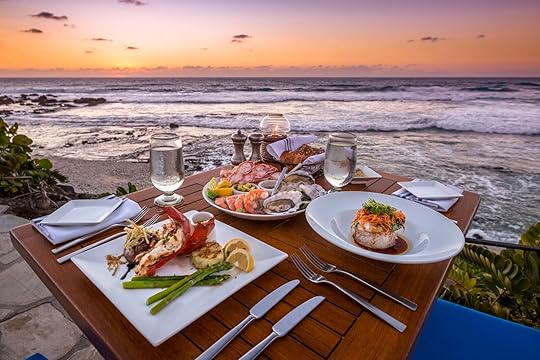
Photo: Hilton
This is the kind of place you could comfortably stay for a week (or two) without leaving the resort and never be bored. Water babies will love the hidden lava rock grottos with whirlpools. Its Kona Pool is the largest on the island and has a wild 175-foot waterslide, rope bridge, hot tubs, and a small sand beach for the kids. There are cabanas for privacy and an adults-only pool where you can have a water-side cocktail. You can swim, snorkel, and paddle on the four-acre lagoon, home to honu (Hawaiian green sea turtles). Every Sunday, Tuesday, and Friday night, you can attend the Legends of Hawaii Luau for a Hawaiian feast and dancing. Lei-making to ukulele and hula classes, bike rentals, an enormous spa, a golf course, tennis courts, and island excursions (from ziplining to sailing) round out the endless list of amenities.

Photo: Hilton
The resort’s spacious and well-appointed accommodations offer modern comforts and stunning views. The Lagoon Tower, in particular, is a popular choice for its proximity to the resort’s amenities and exclusive access to the Makai Club, offering complimentary spa access and reserved poolside seating.
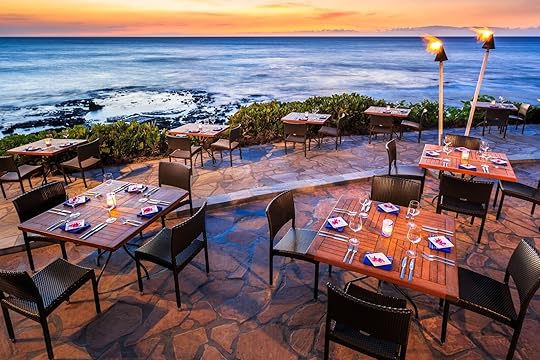
Photo: Hilton
There are a variety of restaurants offering everything from casual fare to fine dining. Nui Italian, a standout among the dining options, serves delicious pasta dishes and mouthwatering pizza. For a more casual dining experience, the Kona Pool Bar offers a relaxed atmosphere and a menu of light bites and refreshing drinks.
The Black Friday and Cyber Monday sale ends on December 2, 2024. Discounted rooms and no resort fees are for travel between December 2024 and fall 2025. All room types, including the newest rooms in Palace Tower: Palace Tower Grand, debuting in January 2025, and premium Makai rooms, are available. No promotional code is necessary, as this sale is already reflected in the base rate during the booking period of November 15 to December 2, 2024. After this date, rates will increase. Check out the resort’s offer page for details on cancellation policies and further terms and conditions. 
November 14, 2024
What Llama Experts Think About the Portland Airport’s ‘Therapy Llamas’
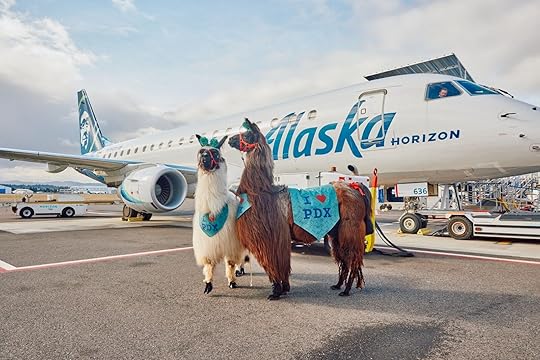
As an anxious traveler, I arm myself with a toolbox of aids — noise-canceling headphones, meditation apps, and essential oils — to make airports bearable. I fork out for lounge access, too, just so I have a safe corner to retreat and distance myself from crowds of people. But animal therapy at an airport has never occurred to me. It sounds like an oxymoron.
Coming from the countryside and having horses on the farm, I appreciate the benefits of being in the company of animals, and they appreciate their comfortable surroundings. Iâm grateful for their companionship every day; however, when I read that Portland International Airport (PDX) has therapy llamas for passengers to hug in airport hallways, I couldnât help but question whether these gentle creatures want to be in an environment with strip lights, booming PA announcements, and throngs of people. So, while navel-gazing and dwelling on my consternation over hordes of strangers, I reached out to PDX and a handful of national organizations that work with llamas to see why this wellness initiative got off the ground and if the llamas employed to quell the stress of passengers are happy getting hugged from passersby.
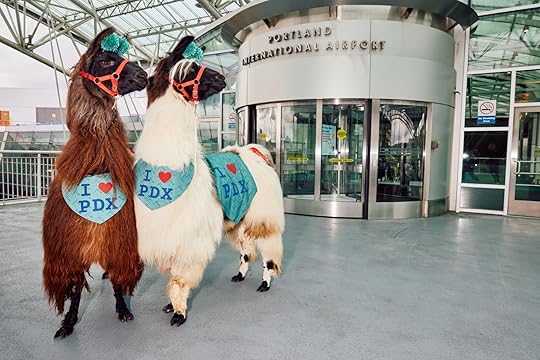
Photo: Mountain Peaks Therapy Llamas and Alpacas
Therapy llamas were introduced to PDXâs concourses this past summer as part of the airportâs animal therapy program. The gentle giants hail from Mountain Peaks Therapy Llamas and Alpacas in Ridgefield, Washington. Every few weeks, the llamas, adorned with “I heart PDX” neckerchiefs and stylish headbands, stroll through the airport to provide comfort and spread joy.
Having support animals at PDX is part of the airportâs larger initiative to bring nature indoors. âThe new PDX was designed based on the concept that nature helps you breathe a little easier,â says Allison Ferre, spokesperson for the Port of Portland. This summer, PDX unveiled a new main terminal inspired by Pacific Northwest forests. The terminal’s expansive roof, crafted entirely from sustainably sourced Douglas fir, is the largest mass timber construction of its kind in the US. And the terminal is filled with live trees and plants that bathe in natural light, bringing a sense of calm to what can often be a very stressful environment.
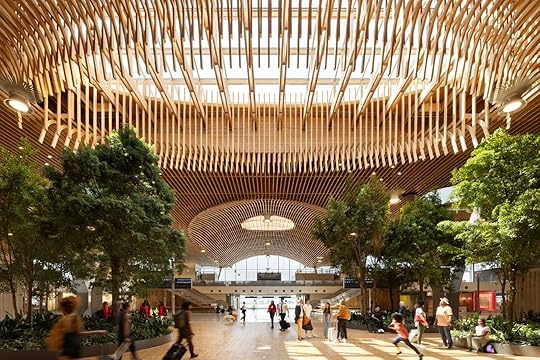
Photo: Portland International Airport
/Ema Peter Photography
With the same goal in mind, Ferre continues, socialized therapy llamas that âvisibly enjoy human interactionâ have been introduced to offer comfort to travelers. Being around groups of people is not new to the llamas. They travel the region offering therapeutic and educational interactions. Llama welfare non-profit organizations claim the animal’s calm and gentle demeanor can profoundly impact emotional well-being.
View this post on InstagramA post shared by Portland International Airport (@pdxairport)
The benefit of having animal therapy in airports is shared across the board with the national llama organizations I reached out to.
âWe’ve found the PDX Airport to be one of the best year-round environments for reducing stress and anxiety among the most diverse population of all ages and abilities,â says Lori Gregory, president and founder of Mountain Peaks Therapy Llamas and Alpacas. Before introducing the treasured llamas to PDX, the organization has worked with Portland communities since 2007. Gregory adds the llamas have taken to the environment like ducks out of water. The airport is within a short drive from the farm and is âsafe, clean, and climate-controlled,â so there are no stressors, and the therapy animals very much enjoy interacting with the public.
âI think it’s wonderful to have the llamas greeting folks in an environment like an airport. There, people are stressed and hurried — the llama’s presence invites people to slow down, come to their senses, and connect to the more-than-human world (qualities we could all experience more of),” says David Wynn of Llamas of Hot Springs, a farm near the intersection of the Appalachian Trail in North Carolina. Wynn shares the opinion that the therapy can be âllamazing.â The llamas under his care often visit places such as college campuses during exam season, adding that events are limited to two hours, with a handler per animal who prioritizes their needs.
George Caldwell, who has worked with llamas for nearly 40 years and runs Llamas of Circle Home in Sonora, California, shares that not all llamas can do this work. âIt takes a level of understanding of the people/llama relationship to be at ease in the hectic world of people, but some llamas are willing and comfortable helping in whatever capacity they can,â Caldwell says, adding that these seasoned professionals (both the animals and their handlers) are familiar with environments like airports with large crowds of people.
Although experts agree that the potential for healing through interactions with llamas has yet to be thoroughly researched, the animals seem to spread joy, which I think we can all agree we need a little more of at the moment. 
Mexico Cityâs Most Instagrammable Hotel Combines Unique Architecture, Fine Dining, and Incredible Views

Volga, tucked off a secondary street in Mexico Cityâs Colonia Cuauhtemoc neighborhood, is evidence of the Mexican capitalâs rise as a premiere destination for experiential accommodations. Combining an energetic rooftop bar with windows overlooking Reforma with onsite art activations and a hidden basement speakeasy, no one could blame the hotelâs guests for not wanting to leave the property at all during their stay, even despite the pull of the street tacos, world-class museums, and a cafe culture that rivals Paris all within walking distance. Traveling to a sprawling major city is better when you know youâll arrive to comfort and convenience, and for that, just off the famed Reforma street is best in class.

The “swimming channel.” Photo: Tim Wenger
Volga bills itself as a âlive music entertainment experienceâ hotel. What stuck out the most to me was the âexperienceâ aspect. It would be very easy to arrive at Volga and spend multiple days onsite without ever feeling the need to leave, due to the abundance of amenities. All rooms face the interior courtyard below, with jawdropping view down to one of Mexico Cityâs most Instagrammable inside locations, the lounge area on the hotelâs main floor (see the photo below).
We hope you love the spaces and stays we recommend! Just so you know, Matador may collect a small commission from the links on this page if you decide to book a stay. Listed prices are accurate as of the time of publication.
Dining and drinking at Volga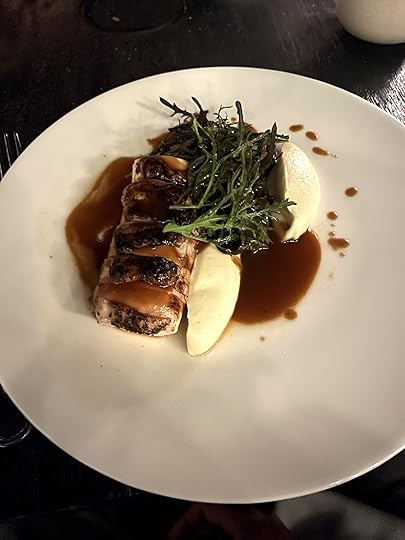 The best meal of the trip. Photo: Tim Wenger
The best meal of the trip. Photo: Tim Wenger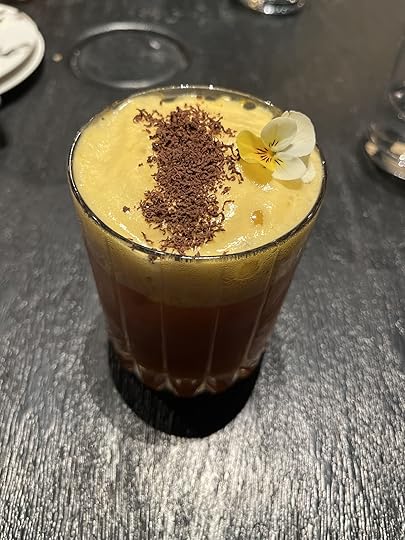 The Mezcalita cocktail is on point. Photo: Tim Wenger
The Mezcalita cocktail is on point. Photo: Tim Wenger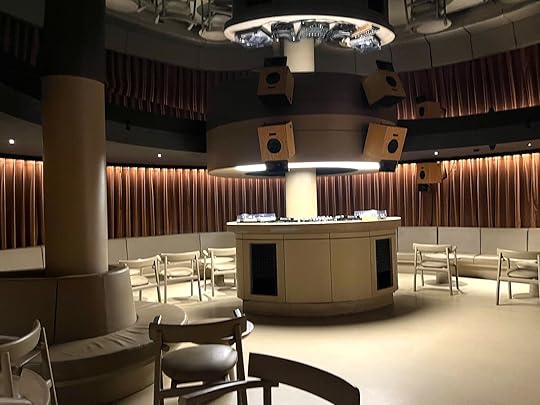 The speakeasy. Photo: Tim Wenger
The speakeasy. Photo: Tim WengerMexico City is home to a large Japanese diaspora comprising more than 3,500 people, largely concentrated in the Cuauhtémoc municipality in the heart of the city. Volga is a block from Reforma, one of the most bustling arteries of the city, and within walking distance to many of the areaâs best Japanese restaurants, several of them operated by Edo Kobayashi, which runs Volga and its onsite restaurant, Elora. Here, Chef Juan Manuel González blends contemporary Spanish-Mediterranean trends with Mexican cooking traditions to craft a menu that is unique even within the global reach of Reformaâs culinary scene.
I had the chicken dish and it was the single best meal I ate over the course of two weeks in Mexico â and that says a lot in a place that my wife and I visit each year specifically for the food. Chef González came out to discuss the dishes, which included vegetarian options and a wine list to pair with anything on the menu. The service was stellar â our glasses never went dry, and the kitchen was able to accommodate dietary restrictions including an onion allergy, no small task in a Mexican kitchen.
The rooftop bar serves an impeccable Mescalito. If you go, grab the table near the âhole in the wallâ overlooking the city â the view is so good itâd be easy to spend hours gazing over drinks and reveling in the sounds and sights of the city below. Itâs possible, however, to completely escape the grind of big city life on the hotelâs bottom floor. Here, a speakeasy bar hosts DJs and and dance parties weekly for a crowd that comingles hotel guests, hipsters, and locals who appreciate good vinyl.
Other amenities at Volga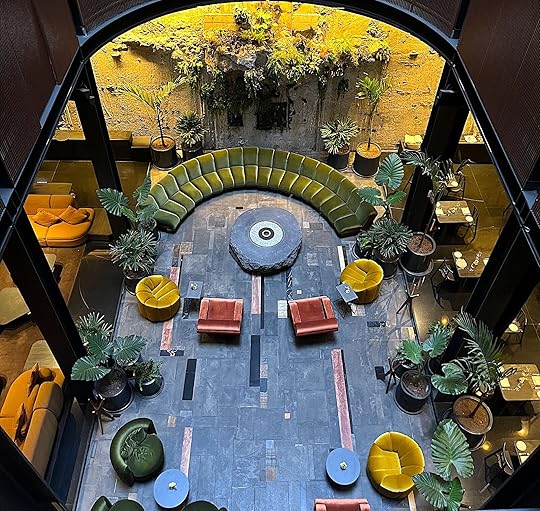 The Instagrammable lounge, viewed from above. Photo: Tim Wenger
The Instagrammable lounge, viewed from above. Photo: Tim Wenger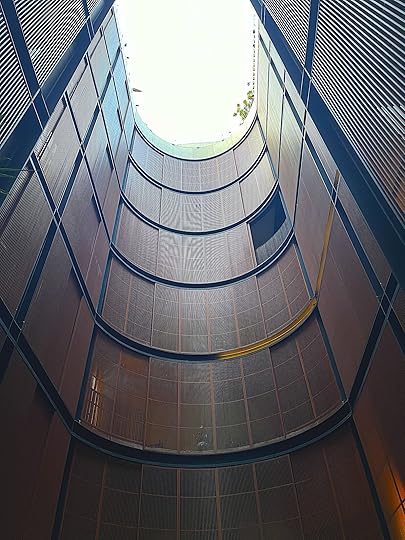 Looking up (see next photo). Photo: Tim Wenger
Looking up (see next photo). Photo: Tim Wenger Looking down. Photo: Tim Wenger
Looking down. Photo: Tim WengerAside from a small sign lighting the hotelâs name near the front door, youâd be hard-pressed to know from up the street that inside this monochrome cement facade on the corner of RÃo Volga and RÃo Nilo is one of the cityâs most exquisitely designed hotels. Walking in the door, guests are greeted with a view looking down to the lounge, deep grays and vibrant yellows combing to form a calming, if unsuspecting ambiance. Itâs only once you begin to interact with the staff at the check-in counter that the spirit of hotel comes alive. Theyâll immediately direct your attention to the courtyard behind you, where youâll look up and see reverse angle view of what youâll look down upon from your room. The hotel encircles this inner lounge courtyard like a silo.
In room, the vibe is worthy of âMTV Cribs.â All rooms feature couch and chair seating overlooking the inner-silo, as I began to call it. A minimalist aesthetic characterized by deep colors and earthy tones is in direct contrast to the busting city outside. Rain showerheads, ample lounge space, and king-size beds round out the experience.

Looking out at the city from the rooftop bar. Photo: Tim Wenger
The hotel hosts rotating art pop-ups and vendors that connect guests to locally-made clothing, furnishings, and, of course, art. The hotel has a small gym and a rooftop âswimming channel,â as its dubbed, offers views of the surrounding high-rises. Cabanas surround the pool, though the aforementioned lounge area is arguably a better place to relax over a book and a cocktail. Yoga classes are offered on the rooftop patio, as are mixology lessons
Deluxe rooms and suites with a separate bedroom are available, with some suites including a balcony overlooking the courtyard. Rooms start around $217 per night. 
Canadaâs Highest Elevation Pride Takes LGBTQ Travel in Banff to New Heights
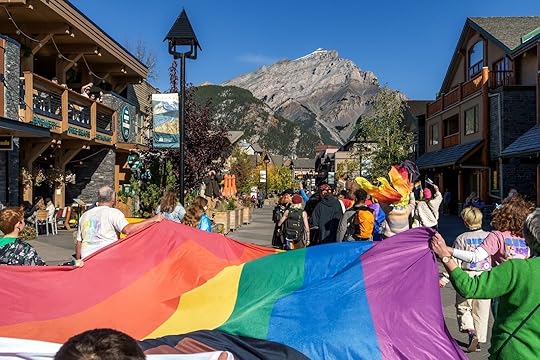
The taxidermy of deer heads, pelts, and a giant bear displayed over the bar at Banffâs Sizzlers makes it seem like youâre in the wrong place for a drag performance, at least where I come from. But when you trust the process and embrace the crowdâs bright, colorful energy, thereâs a sense of elated wonder in knowing that the world has come very far to reach this exact point in time.
Most 2SLGBTQIA+ productions are constantly seeking venues that welcome their talent and artistry. (2S stands for Two-Spirit, a term used to describe Indigenous people who identify as having both masculine and feminine traits.) I come from that world, so recognizing that Banffâs Sizzlers opened its doors to a stellar performance by Pythia from season two of Canada’s Drag Race solidified a sense of pride for me.
Kicking things off with a casual photo-op meet and greet, enigmatic Pythia completely transformed Banffâs Sizzlers by the end of the night, with two fiery acts that included back-to-back outfit changes. After the curtains fell and Pythia walked off stage, the party had only just begun. The lingering of the show’s excitement, coupled with the house music spun by DJ Prince Morbucks that continued to bump throughout the night, checked off all the boxes for me â it was a proper way to pop the first Pride celebration of the weekend.
@matadornetwork Love, diversity, and celebration in the Rockies! Banff Pride is the perfect time to come together, embrace community, and enjoy the outdoor adventures this place has to offer. #MyBanff #BanffPride #Sponsored #Banff #CanadianRockies #CelebratePride @Banff & Lake Louise @BanffPride ⬠original sound – Matador | Travel + Adventure
Canada is considered the first country in the Americas and the fourth country in the world to accept same-sex marriage. Its steps toward a more progressive way of life go way back, to May 1969 to be exact, when Canada officially recognized same-sex consensual acts â exactly one month before the Stonewall Riots took place in New York City. This means that Canadians understood the importance of having the right to choose who and how they love for quite some time.
Itâs crazy to think that feelings of love could ever be illegal, especially when same-sex practices have been a part of human instinct since before the law as we know it existed. To say that same-sex sexual consent, partnerships, or marriage have been decriminalized within the last 20th century baffles me. I look at it not as legalizing LGBTQIA+ rights but rather as unraveling the layers of a transgressive movement.
In the pursuit of reverting back to humankind’s natural order, like being able to love freely, LGBTQ rights have birthed and reshaped themselves, throughout the years giving us many creative outlets including fashion, music, film, dance, drag, and performance. That list goes on â itâs an entire subculture, really. Without these magical elements of self-expression, we wouldnât have a way or a reason to celebrate. That’s why, the next time you’re looking to travel with purpose to a 2SLGBTQIA+ destination, you should visit the Canadian mountain town of Banff.
How an iconic mountain town became a Pride season staple@matadornetwork How to spend the perfect day in BanffWake up at Hotel Canoe & Suites. Have breakfast at Bluebird Woodfired Steakhouse. Go up the Banff Gondola at Sulphur Mountainâ£. Head to Lake Louise for a canoe ride. Grab dinner at Block Kitchen + Bar. @Banff & Lake Louise #MyBanff #Sponsored #Banff #CanadianRockies #HotelCanoeandSuites #BanffGondola #BanffBlock #LakeLouise #CanoeRide ⬠original sound – Matador | Travel + Adventure
In 2022, Banff won the Gay Travel Awards category of best mountain destination because there’s no other place where you can go to a drag brunch in the morning, followed by a cave-climbing excursion or canoe ride in the Canadian Rockies.
This is a big part its beauty as an LGBTQ travel destination. Says Jeffery Carpenter, President of the Banff Pride Society, âBanff welcomes the world, sharing the magic of the Canadian Rockies. As a community, we recognize the importance of attracting those who share our values of diversity and inclusivity. Throughout the year, from baristas to outdoor guides, the entire community is committed to welcoming the 2SLGBTQIA+ community and ready to share the great outdoors for all to enjoy.â
Part of what Carpenterâs words speak to is the fact that the true feeling of Pride is a part of everyday life in Banff, not just for a month or weekend. Over the years, the 2SLGBTQIA+ community has intertwined and integrated itself, and that says a lot for a small town. This is the new normal in the modern age, as it should be. And because Banff is a close-knit village with year-round travel appeal, this sense of camaraderie is much stronger. From local restaurants to the farmer’s market and artisanal shops, supporting one another is key to keeping the community strong.
Banff Hospitality Collective provides one example of Banffâs inclusivity. The collective has many restaurants and venues throughout Banff â such as Blue Bird and Hello Sunshine â that have hosted year-round events, including Drag Bingo at High Rollers. Flow State Yoga is another example in its partnerships with a number of initiatives, including community yoga classes for the 2SLGBTQIA+ community. Meanwhile, Beatnik Salon, through the Dress Code Project, is committed to an inclusive experience and also hosts year-round events, including comedy nights, live music, and gender-free haircuts.
Pride events to remember in BanffThe official Banff Pride has been celebrated over the first two weeks of October since its first iteration in 2013. Itâs a special time when the trees have just turned yellow and the town comes alive to host an array of carefully curated events and activities. Other events are hosted throughout the year, in partnership with the Banff Pride organization. These are some of the highlights.
Banff Pride Parade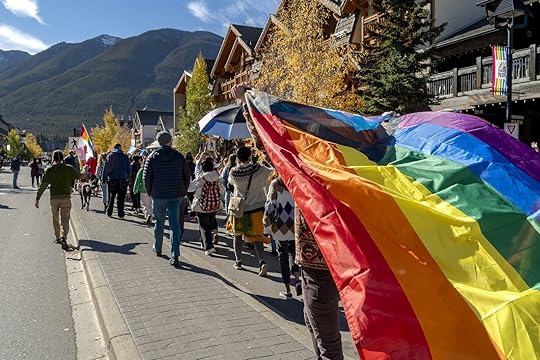
Photo: Robert Massey
The power of the mountains and the crisp, invigorating air make Banffâs Pride parade one of the most scenic and sensorial experiences to date. While many might be accustomed to Pride marches in major cities around the world, Banff’s parade is unique for being surrounded by the vast forces of nature, rather than tall skyscrapers.
The parade unfolds like a surreal moment out of The Wizard of Oz, only instead of the âOver The Rainbowâ song, thereâs an actual bridge â everyone gathers together in the center of town and walks across the âPride pathwayâ (rainbow bridge) as a group, continuing down along the stunning Bow River Trail and back over a second charming bridge before landing in Central Park for the raising of the flag.
Gondola Experience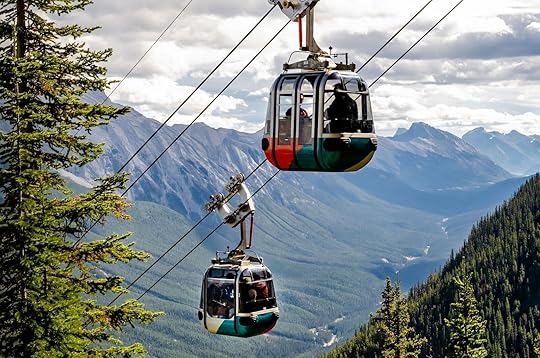
Photo: Gelu Popa/Shutterstock
Just when you thought you couldnât get enough of the mountains by strolling down Banff Avenue, the Banff Gondola ride takes the view to the next level â and creates a space to be proud at an altitude of almost 8,000 feet.
While the Banff Gondola experience runs all year round, Mountaintop Pride is an all-ages celebration that only happens once every October. Attendees can enjoy drag story time, themed cocktails, a Queer Market, and live music â all while soaking in 360-degree panoramic views of the Rocky Mountains.
A variety of other activities also await at the summit of Sulphur Mountain where the gondola stops. You can go on a small hike, learn about Canada’s first national park, or have dinner with a view at Sky Bistro or Northern Lights Alpine Kitchen. Just be prepared to stay a while â itâs tough to pull yourself away from the scenery.
Pride Ski Day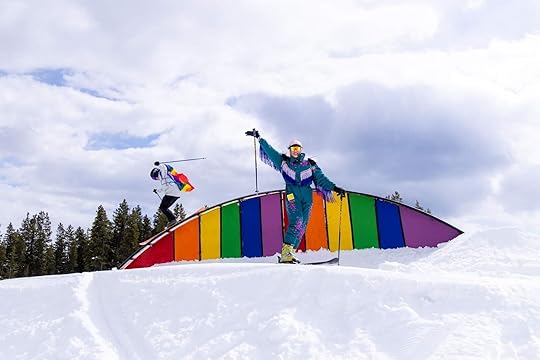
Photo: Bow Media + Bryan White
Just minutes from the town of Banff lies another breathtaking mountain peak among the whopping 146 impressive ranges that make up Banff National Park â Mount Norquay, which hosts an annual Pride Ski Day that takes place in late spring.
Mount Norquay Ski Resort welcomes skiers and snowboarders of all levels to take to the slopes in style. That means coming dressed to impress for the last licks of the winter season. There’s a literal drag race hosted by queens who will judge alpine performances where you can race against a professional ski racer in full garb and drag. Beyond racing, there are campfires, s’mores, and aprés ski tasting sessions.
To top it all off, the resort offers a free shuttle back to town in case one has too many drinks, making sure everyone gets back home safely â just another beautiful feature of a small town with a huge heart.
Banff’s year-round drag performances, LGBTQ-friendly nightlife, and more
Photo: Banff Pride
The words “burlesque circus performance” will get anyone amped to create their own drag disguise and turn looks. At Melissa’s Missteak, whose business name seemed fitting for the occasion, the patrons clearly understood the assignment this past Pride. Host, ring leader, and famed drag comedian Karla Marx, who performs at many venues throughout the Alberta area, transported the audience this year while decked out in neo-noir cirque attire. The spectacle’s level of creativity, originality, and costuming was enough to burn the house down.
Another famed appearance came from well-known drag performer Scarlett BoBo from the first season of Canada’s Drag Race. Scarlett BoBo now lives in Los Angeles but makes it a point to visit Banff for special occasions.
All told, the “Under The Big Top” production at Melissa’s Missteak was considered one of Banff Prideâs biggest nightly events and celebrations. It was produced by The Cabaret Company, the largest cabaret entertainment group in western Canada, which helps provide vibrant communities with spaces to embrace cabaret performance art. The company is constantly keeping up with seasonal events and expanding and updating its roster of artists.
I had to pinch myself multiple times to remember that I wasn’t back in New York City. I was in a small town in the middle of the Canadian Rockies, experiencing theatrical queer performances where everyone around me was dressed to the nines. But these amazing acts of artistry and inclusivity aren’t just a once-yearly occurrence in Banff â they can be found year-round at select places and production houses.
Club DetourClub Detour is an LGBTQIIA+ production entertainment group that hails from Calgary, Canada. It helps promote, push, and produce local talent, events, businesses, and artists within Calgary and neighboring towns like Banff and Canmore. Every year, the group curates and selects different venues â such as Banff Sizzlers or Rose & Crown, the oldest pub in Banff â to house and exhibit drag and burlesque shows during Pride. You can follow Club Detour on Instagram to keep up with its plethora of weekly events within the Alberta area.
Banff Sizzlers: 124 Banff Ave unit 103, Banff, AB T1L 1A7, Canada
Rose & Crown: 202 Banff Ave, Banff, AB T1L 1B5, Canada
Banff Ave Brewing Company hosts a monthly âBeers for Queersâ event in its taproom. While this event is geared toward locals, a lot of visitors have attended after learning about it online and seeking it out to connect with the local LGBTQ community.
Banff Ave Brewing Company: 110 Banff Ave, Banff, AB T1L 1A9, Canada
Moxy BanffMoxy Banff is a recent addition to Banffâs hospitality scene and an LGBTQ-friendly hotel. Moxy Hotels is known for promoting drag brunches in most of its establishments around the world, featuring super high-energy performances, delicious food, and classic brunch cocktails. While the drag brunch at Moxy Banff might have been a special treat just for Pride season, itâs worth noting that the hotel has been welcoming a monthly line-up of drag burlesque and comedy shows in partnership with The Cabaret Company since opening its doors earlier this year. Seating is first-come, first-served, as is typical for drag performances, and just like any other drag show, don’t forget to bring cash.
Moxy Banff: 555 Banff Ave, Banff, AB T1L 1B5, Canada 
A Rogue Wave Sent a Cruise Ship Flying. Should Cruisers Be Worried?

One of the scariest things that can happen at sea recently occurred to passengers on a commercial cruise line: it was hit by a massive rogue wave.
On November 7, Royal Caribbean’s Explorer of the Seas encountered a severe “maritime incident” that has since garnered widespread attention. While navigating from Barcelona to Miami, the vessel was struck by a massive wave during a violent storm off the coast of Africa. This unpredictable event caused the ship to tilt dramatically, causing the ship to list to a 45-degree angle. Videos of the incident were posted on social media, showing passengers struggling to move across the ship and glass bottles and items flying off shelves, causing a bartender on board to cover his head and flee.
According to cruisers on board the ship, the incident lasted only about 30 seconds, though the ship continued to rock for hours later. Immediately after the impact, passengers were ordered to return to their cabins while all crew were accounted for. One passenger shared on a cruising website that “Captain Frank said that we encountered an unforeseen squall and were hit by hurricane force 80 mph winds while going 23 knots.”
Impacts on board were immediate and severe, as the sudden tilt caused unsecured items to become airborne, injuring one passenger critically enough to require an unplanned stop in Las Palmas, Spain, for a medical evacuation. A TikTok video showed an electronic advertising screen crashing against someone walking, and one reel posted to Instagram captioned “chaos at sea” shows the mess on board the ship’s duty-free shopping area. In the video, you can see wrecked displays of watches and jewelry, entire wracks of clothing and gift items knocked into walls, and staff trying to move tables as they work around the disarray.
View this post on Instagram
A post shared by Terry Kelly (@terrykellytravels)
Following the incident, Royal Caribbean issued a statement to media blaming the incident on “sudden wind gusts” (which can cause unexpected waves) and describing the ordeal as “unexpected movement.” The ship eventually continued its course to Miami without further incident.
A ship like Explorer of the Seas — with a length of 1,020 feet, a max width of 157.5 feet, and a weight of approximately 138,194 tons — would need to encounter extraordinarily large waves to cause the reported 45-degree tilt. The extent of the impact of a large wave depends on several factors, including the shipâs center of gravity, ship design, the size of the wave, and the speed and direction with which the save hits the ship. Cruise ships typically have a high center of gravity (due to multiple decks), making them more susceptible to noticeable tilting in severe sea conditions.
Based on general shipbuilding and wave stability calculations, itâs estimated that the Explorer of the Seas would have had to encounter a wave height at least 50 feet tall to cause a 45-degree tilt, particularly if the wave hit the ship’s side. However, it’s possible it could have been a smaller wave that hit the ship when it was already leaning to one direction in the normal course of sailing, which could cause a more dramatic tilt.

Cruise ships bows are designed to smoothly cut through even the largest of waves and swells. Photo: James Steidl/Shutterstock
In short, yes. Cruise ships are designed to travel safely through some of the most remote corners of the ocean and are built to withstand extremes. Although the incident aboard the Explorer of the Seas was likely frightening for passengers and crew, the ship did exactly what it was built to do: it was hit by a wave, listed to one side as predicted, then righted itself and resumed an upright position.
Cruise ships are usually built with deep bows and a hull designed to cut through water and deflect waves to the sides — it’s why cruise ships often can’t enter smaller harbors, as they’re much deeper below the surface than a flat-bottomed boat. But this deep bow also keeps water from splashing on the decks, helping to deflect the immense pressure of waves without stressing the ship. If you’ve ever heard a ship or boat captain mention sailing into waves (rather than parallel to them), that’s part of the reason why.
Cruise ships also usually have stabilizers that extend from the hull to counteract rocking caused by waves, and use ballast systems (tanks that can be filled to lower the ship’s center of gravity) to add more stability in choppy water. Many cruise ships have a dozen or more levels of decks, which is why they also have features designed to counteract the engineering downsides that can cause. Think of cruise ships in large waves like airplanes during extreme turbulence: they can withstand much more than you’d think.
Rogue waves have hit cruise ships occasionally. But because cruise ships can withstand such significant waves, it’s possible that sometimes, passengers don’t even notice. However, there have been a few notable incidents.
In November 2022, a rogue wave hit the Viking Polaris ship during its return to Ushuaia, Argentina, after a cruise to Antartica. The force of the wave caused damage to the ship’s windows and interior spaces, as well as the death of one passenger (killed by shattered glass), and injuries to several more. In 2005, the Norwegian Dawn encountered an estimated 70-foot-tall rogue wave off the coast of Georgia, smashing windows and flooding cabins, and causing a few injuries. The ship sustained structural damage and returned to New York. And in 2023, Hurtigruten’s MS Maud was struck by a rogue wave during a northern lights cruise. It caused a power outage and disabled the ship’s navigation systems, but no injuries were reported.

An ocean monitoring buoy in Thailand. Photo: The Mariner 4291
Rogue waves are a rare but increasingly documented phenomena in oceanography. Once thought to be a myth perpetrated by sailors and captains trying to hide their nautical mistakes, the towering walls of water are very much real, and perhaps more frequent than once thought. A “rogue wave” is defined as a wave at least twice the height of surrounding waves. If it doesn’t meet that criteria, it’s considered an “unexpected wave.” So while all rogue waves are unexpected, not all unexpected waves are rogue waves (though the terms are often used interchangeably as their effects can be similar).
Better and higher-tech monitoring efforts like ocean sensors, satellite observation tools, ship-based radar, and a whole host of AI and data-based monitoring tools have made it much easier for scientists to learn when rogue or unexpected waves occur. So their frequency likely hasn’t increased, but scientists’ ability to track and study them has gotten better.

Photo: ZHMURCHAK/Shutterstock
Rogue and unexpected waves are still rare, and are the result of several natural forces aligning. Scientists think the most likely scenario for a rogue wave to form is “constructive interference,” where smaller waves combine at just the right time to create a much larger wave. This can happen when strong ocean currents meet opposing winds, forcing waves to build up quickly. Based on the captain’s announcement on board, this may have been what happened with the Explorer of the Seas. It’s also why unexpected waves are more common during storms, when strong winds and strong ocean swells are more likely.
However, scientists don’t totally understand what drives rogue waves, and since they usually occur in the middle of the ocean for only a few seconds at a time, they’re quite difficult to study.

Photo: Zivica Kerkez/Shutterstock
While rogue waves are dramatic, they’re still rare, and modern cruise ships are designed to handle rough seas and sudden wave impacts. Given the vast number of cruises that take place each year (31.7 million people cruised in 2023), the fact that any one incident makes global headlines tells you how rare they are. In addition to being built to withstand extreme conditions (sometimes due to their massive size), cruise ship technology is extremely high tech, and individual ships monitor weather and ocean conditions and set routes that intentionally avoid rougher patches of sea.
It’s been well over 100 years since any large passenger ship was lost at sea — and even then, the ship was only a fraction of the size of today’s smallest ships. In July 1909, the SS Waratah (a passenger and cargo steamship), vanished without a trace between Durban and Cape Town, South Africa. No wreckage or survivors were ever found, and it remains a maritime mystery. Some have theorized that a rogue wave or extremely rough sea was the cause, but without any evidence, it’s likely we’ll never know. However, the SS Waratah was only 500 feet long — large for the time, but even the smallest ship in the Royal Caribbean fleet is nearly twice as long: the 916-foot-long “Grandeur of the Seas.” 
Intrepid’s Immersive Tours Around the World Are Up to 20% Off Right Now

Booking a planned trip with a guide can be intimidating. The market is competitive with companies offering out-of-this-world itineraries, family-friendly options, female-only, cycling, hiking, and trekking trips — the list goes on. Through the years, Matador has partnered with various providers, and Intrepid Travel keeps impressing. This is in part because the company only works with expert guides who know the place and its culture intimately, sharing insights that you won’t find in any guidebook, and because the range of tours — over 1000 adventures in over 100 countries — that offer the opportunity to visit places we might have written off as being too complicated or unnerving to vacation to without guidance.
From November 14 to December 5, Intrepid is running a Cyber Sale with up to 20 percent on over 800 tours. So, if youâve been considering a 2025 adventure to Morocco, Machu Picchu in Peru, or a foodie trip to Vietnam, nowâs youâre chance to save on a booking with the company.
Aside from the range of well-constructed tours to far-flung destinations, Intrepid Travel is a company with a soul, one that’s deeply committed to giving back to the communities it visits. Through its Intrepid Foundation, the company has been making a tangible difference in the lives of people around the world for over two decades. One of the foundation’s core principles is transparency. They believe travelers should know exactly where their money is going and how it’s used. That’s why they work closely with local partners to ensure that every dollar donated makes a meaningful difference. The foundation’s projects are diverse and impactful, from building schools and hospitals to providing clean water and sustainable livelihoods.
During this year’s Cyber Sale, the Intrepid Foundation is taking its commitment to giving back to the next level. They will match donations dollar for dollar, meaning that each donation will have twice the impact, helping to support even more community projects.
At the heart of Intrepid’s philosophy is a deep-rooted commitment to responsible travel. The company strives to minimize its environmental impact while maximizing its positive impact on local communities. This will become clear quickly as you run through the selection of tours included in the Cyber Sale. Whether you’re a seasoned adventurer or a first-time traveler, Intrepid offers a diverse range of tours, from hiking the Inca Trail to exploring the markets of Marrakech. Each has something in common; the itineraries will take you off the beaten path and make you feel less like a tourist and more like a guest. Here are a few standout tours for 2025 that are included in this yearâs sale.

Photo: Intrepid Travel
Morocco Highlights (20 percent off): A ten-day tour showcasing Moroccoâs history, nature, culture and cuisine. It begins in Marrakech, where you’ll explore the labyrinthine alleyways of the medina, haggle for treasures in the souks, and relax in a traditional hammam. From there, you’ll venture to the coastal city of Casablanca, where you’ll visit the Hassan II Mosque. Next are the blue-washed streets of Chefchaouen, a picturesque town in the Rif Mountains. Your journey continues to the ancient Roman ruins of Volubilis, a UNESCO World Heritage Site, and onto Fez el Bali, the world’s largest car-free urban area. No trip to Morocco is complete without a visit to the Sahara Desert. The trip includes a camel trek through the dunes and camping in the desert under the starry sky. Then, itâs onto the Atlas Mountains, where you’ll encounter stunning landscapes, including the Todra Gorge and Dades Valley. Hike through the dramatic gorges, explore Berber villages, and have a traditional lunch with a local family before returning to Marrakech.

Photo: Intrepid Travel
Inca Trail Express (20 percent off): Intrepid’s Inca Trail Express offers an immersive journey to one of the world’s most iconic archaeological sites: Machu Picchu. Designed to cater to all abilities, the tour begins in Cusco, where you can explore the city’s colonial architecture, markets, and ancient ruins. From Cusco, you’ll venture into the Sacred Valley, where you will visit the fortress of Ollantaytambo, a testament to the engineering prowess of the Inca people. The highlight of the trip is undoubtedly the Inca Trail trek. Youâll journey through stunning Andean landscapes, passing through cloud forests, by waterfalls, and ancient Inca ruins. As you ascend, the views become increasingly breathtaking, culminating in the unforgettable sight of Machu Picchu. There’s also the option to take the train to Machu Picchu. Intrepid’s Inca Trail Express is the perfect choice for travelers who want to experience the best of Peru in a limited amount of time and those who prefer a flexible itinerary led by expert guides.

Photo: Intrepid Travel
Galapagos Family Holiday (15 percent off): Most of us can only dream about taking our family to the Galapagos. What a gift of education this would be for the kids (and us, too). This immersive adventure takes you to the islands of Santa Cruz and San Cristobal, where you’ll have the chance to witness the archipelago’s diverse wildlife. Throughout the trip, the knowledgeable guides will share insights into the natural history and ecology of the Galapagos Islands. They’ll help you identify different species, explain their unique adaptations, and answer your questions. This bucket-list, family-friendly adventure is designed to spark curiosity and inspire a love for nature.
For more details on these excursions and to browse all Intrepid trips, check out the siteâs Cyber Sale page and terms and conditions. 
November 13, 2024
This Chic Hotel Brings a Dose of Luxury to Portugalâs Laid-Back Algarve
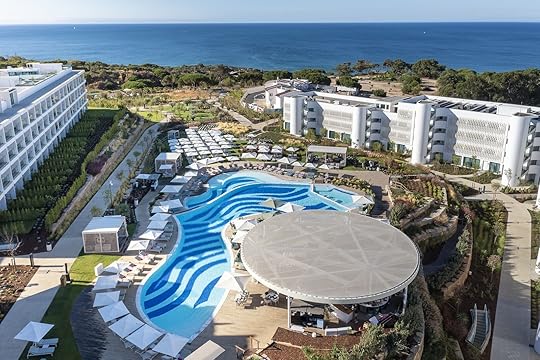
When you first enter the W Algarve in Albufeira, Portugal, you immediately notice a collection of 613 handmade ceramic plates covering a feature wall. Their intricate patterns and sun-warmed hues set the tone for what lies ahead: a stay thatâs both grounded in local heritage and elevated by the hotel chainâs signature touch of modern luxury mixed with trendy touches.
Fostering a sense of hospitality that puts guests at ease is one way the hotel promises a refined stay while matching the laid-back spirit of the Algarve, Portugalâs southernmost region. Shortly after my feet touched the hotelâs cobblestone driveway â a nod to the countryâs historical streets â I was offered a glass of bubbly to enjoy during the check-in process while admiring the lobby’s design, which represents the shells and waves of the surrounding ocean.
By the time I was shown to my room, where I received a thoughtful rundown of its features and essential notes about the hotel, my eagerness to explore the rest of the property was through the proverbial ceiling.
The rooms at the W Algarve
Photo: W Algarve
In true W fashion â combining comfort, culture, and flair â the rooms at the W Algarve maintain a sense of luxury while offering an element of fun. With 134 guest rooms and 83 residences, the hotel provides a variety of accommodation options. On the hotel side, there are one- to two-bedroom suites, a luxury penthouse, king bedrooms, and rooms featuring two twin beds. For larger groups needing more space, the residences offer one- to four-bedroom apartment-style lodgings that include full kitchens.
Through a hallway of colorful doors, I entered my king room, where I had direct views of the setting sun. My balcony overlooked the pool â known as the Wet Deck â and I could hear music playing throughout the property, gradually increasing in tempo as the day progressed. Rooms also come equipped with mini speakers, reinforcing the brandâs emphasis on music-filled experiences.
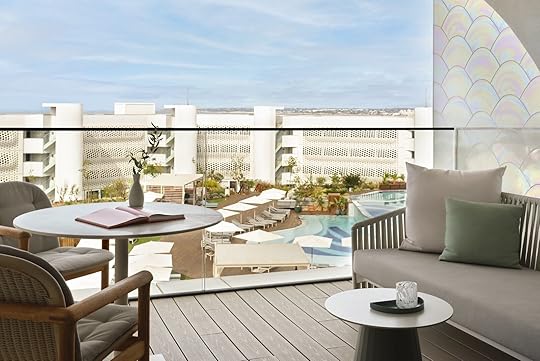
Photo: W Algarve
The room itself was impressively spacious and design-forward. My suitcases were set up in the walk-in closet (yes, you read that correctly) where I kept everything neatly put away and completely out of sight during my trip. It was a luxury I didnât know I needed, which became a theme of my stay once I discovered the button next to my bed that allowed me to open and close the drapes without even having to get up (a challenge every morning given the bedâs incredible comfort). The nightly turndown service included replenishing my water and laying down a fluffy bath mat, which made coming back to the room equally restful every evening.
Another standout feature was the vanity in the bathroom, complete with a stool and separate counter space for getting ready. As someone who does not pack lightly in the beauty department, I found this to be such an underrated room amenity. I used it every morning while wearing my bathrobe and slippers and sipping on coffee from my in-room espresso machine.
The amenities at the W Algarve
Photo: W Algarve
Of its many amenities, the two-level infinity pool is the W Algarveâs main attraction. However, what really sets the hotel apart is its proximity to the sea. At the edge of the property, beyond AIR â where nightly bubbly is served from the bar during the warmer months, accompanied by sunset views and a DJ â is a cliffside oasis designed to make you instantly exhale. Carved-out paths provide opportunities for a closer view of the waves crashing along the rugged coastline or for venturing down to secluded beaches. Guided walks will soon be offered by the hotelâs fitness instructors, who also lead group exercise classes such as spin, yoga, and mat pilates, as well as private sessions in the ultra-modern gym, FIT.

Photo: W Algarve
Neighboring FIT is the hotel’s AWAY spa, which is immediately calming and whose outdoor area is like a wellness playground. With options including a sauna, steam room, sensory shower, plunge pool, and jacuzzi, I found it difficult to even decide where to begin while I awaited my Express Facial. I spent a good portion of the morning moving from one amenity to another until it was time for my treatment.
As someone with very sensitive skin, I appreciated the estheticianâs reassurance that the products used â Comfort Zone, a sustainably made Italian beauty brand â would be suitable for my needs. She was right. The 30-minute facial passed quickly, during which my skin was cleansed, treated with a hydrating mask, and given a scalp massage. I left with glowing skin and wondered how I could fit in another treatment.
The restaurants at the W AlgarveExecutive Chef Julio Ferradas helms the W Algarveâs impeccable on-site dining scene. Drawing influence from his home in Lima, Peru, and leveraging over 15 years of experience in luxury dining, Ferradas fosters an environment where innovation and creativity take center stage. There are three main restaurants on the property: Market Kitchen, Paper Moon, and Vino by Paper Moon, each serving its own distinctive menu.
Market Kitchen
Photo: W Algarve
The intention behind Market Kitchen â the only spot where you can enjoy breakfast, lunch, and dinner â is to create an atmosphere reminiscent of an international market, where flavors from all over the world inspire the menu. The breakfast buffet is robust, with offerings including freshly made pastries, including Portugalâs signature pastel de nata (egg custard tart) with its perfectly flaky crust; an egg station where chefs prepare eggs to order, any style, with any toppings; fruit such as kiwis, figs, and melons; and a mimosa station made with freshly squeezed orange juice. With or without the Champagne, the orange juice was the most delicious Iâd ever tasted.
The lunch and dinner menus are just as impressive, starting with local seafood dishes like grilled octopus, ceviche, and cataplana (Portuguese seafood stew). One highlight for me was a heavenly orange cheesecake, which came in the shape and color of an actual orange, paired with chocolate crumble and dark chocolate ice cream.
Paper Moon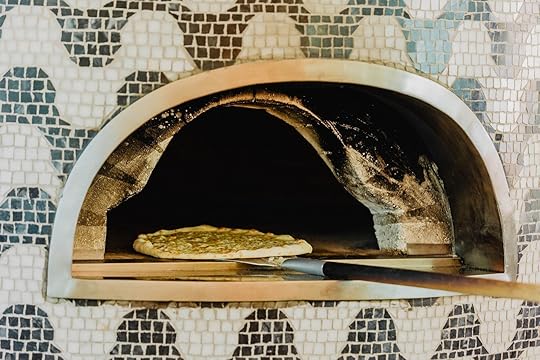
Photo: W Algarve
Originating from Milan, Paper Moon is an upscale Italian restaurant offering a range of dishes with high-quality, seasonal ingredients. Located on the top floor of the hotel, it comes with immaculate views and can be enjoyed inside or outside for alfresco dining. For an appetizer, try the burrata served with a rosemary tomato confit, basil olive oil, and toasted bread crumble â it tastes even better than it sounds. The gnocchetti â homemade ricotta gnocchi with truffle cream sauce, seasonal black truffle, and toasted hazelnuts â was also a crowd favorite.
Vino by Paper Moon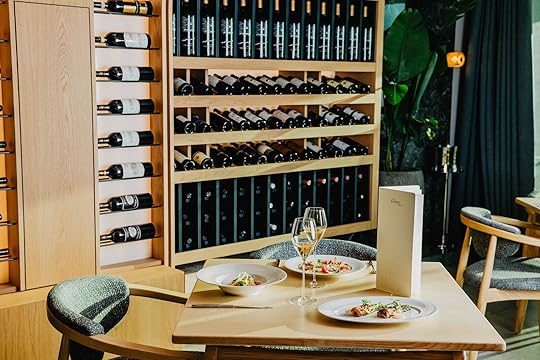
Photo: W Algarve
Vino by Paper Moon is a more intimate venue that caters to wine lovers by expertly curating pairings with its dishes. Starters like the beef carpaccio and salmon tartare are must-tries, and the seafood risotto was packed with flavor in every bite.
When youâre not eating a full meal, there are plenty of other places around the hotel to unwind with a drink in hand. You can order a beverage and snacks while lounging in the sun at the Wet Deck or hop on over to the poolside bar, SIP. The W lounge bar in the lobby is another place to grab a pre- or post-dinner cocktail, and on most nights, youâll find a DJ spinning tunes.
Things to do near the W Algarve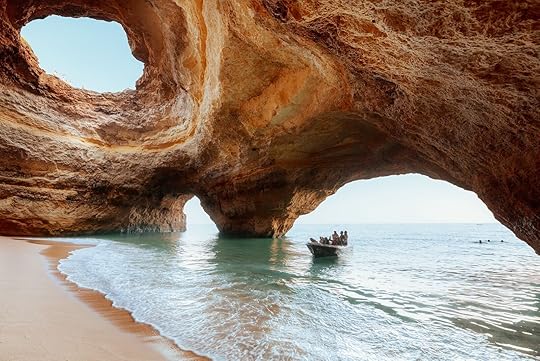
Photo: iacomino FRiMAGES
/Shutterstock
The entire Algarve region is known for its surf and sand, which makes catching some waves or rays at local beaches like São Rafael or Falésia a must. You can also appreciate the coastal scenery from the comfort of a boat. One nearby attraction thatâs not to be missed if you do is the Benagil Sea Cave, which you can explore by either boat or kayak.
For a cultural outing during my stay, the hotel arranged a visit to a local winery and brewery, Quinta Dos Santos. There, I learned about the vineyardâs history and processes and sampled a few different wines. During the harvest season, the vineyard invites wine enthusiasts to participate in hand-picking the grapes followed by grape-treading â an experience that involves stomping barefoot on the grapes to produce the juices for the wine. When my tour ended, I enjoyed a three-course dinner on site, indulging in sea bass, grilled octopus, an artisanal charcuterie board with local cheeses, and cheesecake with berry compote.
I also had the pleasure of visiting Mato a Vista, a laid-back restaurant serving traditional Portuguese fare. When I entered, I passed by a cooler filled with various seafood options that were ready to be cooked to order. The cocktails from the bar were some of the most unique and visually stunning Iâve encountered â often garnished with fresh herbs and fruit and served in fun vessels like flower pots or pineapple-shaped glasses.
How to get to the W Algarve
Photo: W Algarve
The closest airport to the W Algarve is in Faro, the regional capital, which is about 45 minutes from Albufeira. Once you land in Faro, you can take a taxi, bus, or ask the hotel to set you up with a private transfer. Youâre welcome to rent a car if you want the freedom to roam during your stay, but itâs not necessary as there are plenty of taxis available to help you get around locally. 
This Chic Hotel Brings a Dose of Luxury to Portugal’s Laid-Back Algarve

When you first enter the W Algarve in Albufeira, Portugal, you immediately notice a collection of 613 handmade ceramic plates covering a feature wall. Their intricate patterns and sun-warmed hues set the tone for what lies ahead: a stay that’s both grounded in local heritage and elevated by the hotel chain’s signature touch of modern luxury mixed with trendy touches.
Fostering a sense of hospitality that puts guests at ease is one way the hotel promises a refined stay while matching the laid-back spirit of the Algarve, Portugal’s southernmost region. Shortly after my feet touched the hotel’s cobblestone driveway — a nod to the country’s historical streets — I was offered a glass of bubbly to enjoy during the check-in process while admiring the lobby’s design, which represents the shells and waves of the surrounding ocean.
By the time I was shown to my room, where I received a thoughtful rundown of its features and essential notes about the hotel, my eagerness to explore the rest of the property was through the proverbial ceiling.
The rooms at the W Algarve
Photo: W Algarve
In true W fashion — combining comfort, culture, and flair — the rooms at the W Algarve maintain a sense of luxury while offering an element of fun. With 134 guest rooms and 83 residences, the hotel provides a variety of accommodation options. On the hotel side, there are one- to two-bedroom suites, a luxury penthouse, king bedrooms, and rooms featuring two twin beds. For larger groups needing more space, the residences offer one- to four-bedroom apartment-style lodgings that include full kitchens.
Through a hallway of colorful doors, I entered my king room, where I had direct views of the setting sun. My balcony overlooked the pool — known as the Wet Deck — and I could hear music playing throughout the property, gradually increasing in tempo as the day progressed. Rooms also come equipped with mini speakers, reinforcing the brand’s emphasis on music-filled experiences.

Photo: W Algarve
The room itself was impressively spacious and design-forward. My suitcases were set up in the walk-in closet (yes, you read that correctly) where I kept everything neatly put away and completely out of sight during my trip. It was a luxury I didn’t know I needed, which became a theme of my stay once I discovered the button next to my bed that allowed me to open and close the drapes without even having to get up (a challenge every morning given the bed’s incredible comfort). The nightly turndown service included replenishing my water and laying down a fluffy bath mat, which made coming back to the room equally restful every evening.
Another standout feature was the vanity in the bathroom, complete with a stool and separate counter space for getting ready. As someone who does not pack lightly in the beauty department, I found this to be such an underrated room amenity. I used it every morning while wearing my bathrobe and slippers and sipping on coffee from my in-room espresso machine.
The amenities at the W Algarve
Photo: W Algarve
Of its many amenities, the two-level infinity pool is the W Algarve’s main attraction. However, what really sets the hotel apart is its proximity to the sea. At the edge of the property, beyond AIR — where nightly bubbly is served from the bar during the warmer months, accompanied by sunset views and a DJ — is a cliffside oasis designed to make you instantly exhale. Carved-out paths provide opportunities for a closer view of the waves crashing along the rugged coastline or for venturing down to secluded beaches. Guided walks will soon be offered by the hotel’s fitness instructors, who also lead group exercise classes such as spin, yoga, and mat pilates, as well as private sessions in the ultra-modern gym, FIT.

Photo: W Algarve
Neighboring FIT is the hotel’s AWAY spa, which is immediately calming and whose outdoor area is like a wellness playground. With options including a sauna, steam room, sensory shower, plunge pool, and jacuzzi, I found it difficult to even decide where to begin while I awaited my Express Facial. I spent a good portion of the morning moving from one amenity to another until it was time for my treatment.
As someone with very sensitive skin, I appreciated the esthetician’s reassurance that the products used — Comfort Zone, a sustainably made Italian beauty brand — would be suitable for my needs. She was right. The 30-minute facial passed quickly, during which my skin was cleansed, treated with a hydrating mask, and given a scalp massage. I left with glowing skin and wondered how I could fit in another treatment.
The restaurants at the W AlgarveExecutive Chef Julio Ferradas helms the W Algarve’s impeccable on-site dining scene. Drawing influence from his home in Lima, Peru, and leveraging over 15 years of experience in luxury dining, Ferradas fosters an environment where innovation and creativity take center stage. There are three main restaurants on the property: Market Kitchen, Paper Moon, and Vino by Paper Moon, each serving its own distinctive menu.
Market Kitchen
Photo: W Algarve
The intention behind Market Kitchen — the only spot where you can enjoy breakfast, lunch, and dinner — is to create an atmosphere reminiscent of an international market, where flavors from all over the world inspire the menu. The breakfast buffet is robust, with offerings including freshly made pastries, including Portugal’s signature pastel de nata (egg custard tart) with its perfectly flaky crust; an egg station where chefs prepare eggs to order, any style, with any toppings; fruit such as kiwis, figs, and melons; and a mimosa station made with freshly squeezed orange juice. With or without the Champagne, the orange juice was the most delicious I’d ever tasted.
The lunch and dinner menus are just as impressive, starting with local seafood dishes like grilled octopus, ceviche, and cataplana (Portuguese seafood stew). One highlight for me was a heavenly orange cheesecake, which came in the shape and color of an actual orange, paired with chocolate crumble and dark chocolate ice cream.
Paper Moon
Photo: W Algarve
Originating from Milan, Paper Moon is an upscale Italian restaurant offering a range of dishes with high-quality, seasonal ingredients. Located on the top floor of the hotel, it comes with immaculate views and can be enjoyed inside or outside for alfresco dining. For an appetizer, try the burrata served with a rosemary tomato confit, basil olive oil, and toasted bread crumble — it tastes even better than it sounds. The gnocchetti — homemade ricotta gnocchi with truffle cream sauce, seasonal black truffle, and toasted hazelnuts — was also a crowd favorite.
Vino by Paper Moon
Photo: W Algarve
Vino by Paper Moon is a more intimate venue that caters to wine lovers by expertly curating pairings with its dishes. Starters like the beef carpaccio and salmon tartare are must-tries, and the seafood risotto was packed with flavor in every bite.
When you’re not eating a full meal, there are plenty of other places around the hotel to unwind with a drink in hand. You can order a beverage and snacks while lounging in the sun at the Wet Deck or hop on over to the poolside bar, SIP. The W lounge bar in the lobby is another place to grab a pre- or post-dinner cocktail, and on most nights, you’ll find a DJ spinning tunes.
Things to do near the W Algarve
Photo: iacomino FRiMAGES
/Shutterstock
The entire Algarve region is known for its surf and sand, which makes catching some waves or rays at local beaches like São Rafael or Falésia a must. You can also appreciate the coastal scenery from the comfort of a boat. One nearby attraction that’s not to be missed if you do is the Benagil Sea Cave, which you can explore by either boat or kayak.
For a cultural outing during my stay, the hotel arranged a visit to a local winery and brewery, Quinta Dos Santos. There, I learned about the vineyard’s history and processes and sampled a few different wines. During the harvest season, the vineyard invites wine enthusiasts to participate in hand-picking the grapes followed by grape-treading — an experience that involves stomping barefoot on the grapes to produce the juices for the wine. When my tour ended, I enjoyed a three-course dinner on site, indulging in sea bass, grilled octopus, an artisanal charcuterie board with local cheeses, and cheesecake with berry compote.
I also had the pleasure of visiting Mato a Vista, a laid-back restaurant serving traditional Portuguese fare. When I entered, I passed by a cooler filled with various seafood options that were ready to be cooked to order. The cocktails from the bar were some of the most unique and visually stunning I’ve encountered — often garnished with fresh herbs and fruit and served in fun vessels like flower pots or pineapple-shaped glasses.
How to get to the W Algarve
Photo: W Algarve
The closest airport to the W Algarve is in Faro, the regional capital, which is about 45 minutes from Albufeira. Once you land in Faro, you can take a taxi, bus, or ask the hotel to set you up with a private transfer. You’re welcome to rent a car if you want the freedom to roam during your stay, but it’s not necessary as there are plenty of taxis available to help you get around locally. 
Apple AirTags Can Now Help Airlines Find Your Missing Luggage Faster

Apple’s AirTags are about to get a brilliant new feature. With iOS 18.2 (now available in beta), the Find My app has a new option to share an item’s location. You can do so not only with your significant other but also with third parties like airlines. That means if you have an AirTag on your luggage and it’s lost or mishandled, you can share the location with the airline and (hopefully) get your belongings back a lot faster.
We hope you love the products we recommend! Just so you know, Matador may collect a small commission from the links on this page if you decide to purchase. Listed prices are accurate as of the time of publication.
Right now, air travel feels more unpredictable than ever, with delays resulting in slim-line connections. This year, I’ve reached my destination without my checked bag on three of my four work trips.
Sure, I can sprint a mile or so through Heathrow Home Alone style to my departure gate. I’ve done this many times before (and it’s not pretty), but part of me feels like what’s the point if I manage to board drenched in sweat with the dreaded feeling that there’s not a snowball’s chance in hell my bag has also made the connection.
Unless I’m on the return leg and going directly home to a fresh pair of pajamas, perhaps I should saunter and miss boarding. At least I’ll know I’m in the same place as my belongings, and they’ll likely be on the next flight with me. On the three occasions my luggage was lost in 2024, various airlines took between 24 — 48 hours to deliver the bag. That’s an inconvenience if you’re vacationing on the beach and devastating if you need specialized gear, meeting new people for the first time, or representing the company.
Granted, I’ve never used an AirTag on my luggage before. I’ve not seen the point. Other than being able to track down someone who accidentally took the wrong bag off the conveyor belt, seeing the luggage stuck in transit wouldn’t have made a huge difference to the situation. However, Apple’s announcement about the new AirTag feature could be a game-changer.
“The Find My network and AirTag have proven to be a powerful combination for users while traveling, providing invaluable location information when bags have been misplaced or mishandled. With Share Item Location, we’re excited to give users a new way to easily share this information directly with third parties like airlines, all while protecting their privacy,” says Eddy Cue, the company’s senior vice president of services.
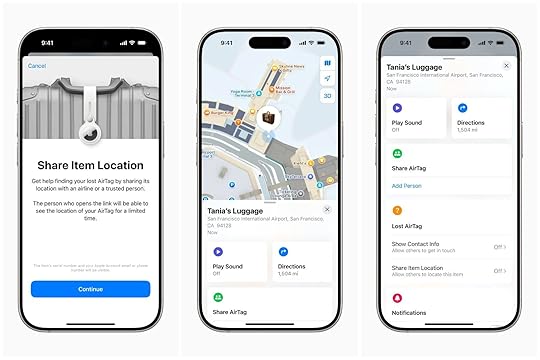
Photo: Apple
With Share Item Location, you can generate a link in the Find My app, which can then be shared with airlines. This link provides real-time location updates of the lost luggage on an interactive map. The location is automatically updated and includes a timestamp for the most recent update. On the note of privacy, the shared location of the item is automatically disabled once it’s recovered. You can also stop sharing at any time, and the link expires after seven days — here’s hoping you’re not waiting more than a week to be reunited with your luggage.
Apple says in the coming months, the following airlines (more to follow) will integrate this technology into their customer service protocol.
Aer LingusAir CanadaAir New ZealandAustrian AirlinesBritish AirwaysBrussels AirlinesDelta Air LinesEurowingsIberiaKLM Royal Dutch AirlinesLufthansaQantasSingapore AirlinesSwiss International Air LinesTurkish AirlinesUnitedVirgin AtlanticVuelingApple is also working with SITA, a leading air transport technology company, to integrate Share Item Location into its WorldTracer baggage-tracing system. This is used by over 500 airlines at almost 3,000 airports worldwide.
Apple AirTags are currently on sale for Black Friday with reductions of between 29 and 34 percent. A pack of four ($69.99) is a must for families, and a single ( $19.00) is suitable for one piece of luggage. You’ll also need a lockable key chain to secure the tag to your belongings. 
Gladiators Are Returning to Rome’s Colosseum â and You Could Be One

Iâve read weâll miss Russell Croweâs Maximus in Ridley Scottâs Gladiator II, but itâs been 20-some years since Crowe unleashed hell on ancient Rome, and I think weâve waited long enough for a predecessor. The blockbuster is screening in theatres from November 22, and in celebration of the riveting sequel (and Denzil Washington), Airbnb and Paramount Pictures have teamed up to offer the wildest Icons experience to date, the chance to enter the Colosseum in Rome after dark and train as a gladiator.
We hope you love the Gladiator Icons Airbnb we recommend! Just so you know, Matador may collect a small commission from the links on this page if you decide to book a stay. Listed prices are accurate as of the time of publication.

Photo: Airbnb/Daniele Castellaro
Airbnb launched Icons in May. So far, weâve been offered experiences such as a night in a home inspired by Disney and Pixar’s Up, an overnight stay in the Ferrari Museum, a chance to witness the opening ceremony of the Olympic Games at the Musée d’Orsay, and a slumber party at Prince’s Purple Rain house. These experiences are reasonably priced. They donât include travel to the destination, but each costs under $100 per person.

Photo: Airbnb/Christopher Anderson
On that note, the new Colosseum experience will cost the lucky chosen 16 (8 guests and their plus one) $0. All you need to do is be ready for combat and request to book one of two three-hour experiences held from May 7 to 8, 2025. Airbnb will launch âbookingâ from November 27 at 6:00 AM PT to December 9 at 11:59 PM PT. You will be responsible for your flights to Rome and accommodation (the experience does not include an overnight stay in the Colosseum). However, Airbnb lists some epic properties near the Colosseum that are reasonably priced and have views over the amphitheater.
Traveling to Rome? Check out Matadorâs Rome accommodations guides: 11 Rome Airbnbs With a Gorgeous View of the Colosseum This Five-Star Historic Hotel Has the Best Location in All of Rome Skip the Crowds in Rome With a Stay at One of These Luxurious Hotels Next to the Colosseum The Finest Airbnbs Near the Trevi Fountain With Incredible Views of Rome This Stunning Hotel Offers Pasta Making Classes, Yoga, and Some of the Best Views in RomeFor centuries, the Colosseum has been a powerful symbol of ancient Rome’s gladiatorial combat. Now, for the first time in nearly two millennia, the arena will again come to life with the clash of steel. After sunset, you and your guest will be greeted by a master of ceremonies who will guide you through the network of underground chambers where youâll be outfitted in armor, after which your journey will continue through the torch-lit labyrinth of passageways, retracing the steps of past gladiators.
Learn More
Photo: Airbnb/Christopher Anderson
Youâll learn about the history of the gladiatorial games before watching professionals stage an action-packed combat demonstration. When itâs time to prove your mettle, under the vigilant referee, youâll receive training in the art of combat. Youâll learn how to wield your weapon and master maneuvers to foil your component.

Photo: Airbnb/Christopher Anderson
This Icons experience would make a legendary holiday gift and it’s wonderful excuse to visit Italy in spring. Set a reminder now for November 27, and keep your fingers crossed that youâll be victorious. 
Matador Network's Blog
- Matador Network's profile
- 6 followers



